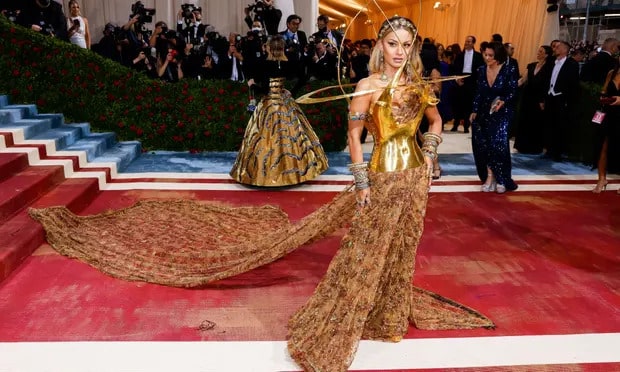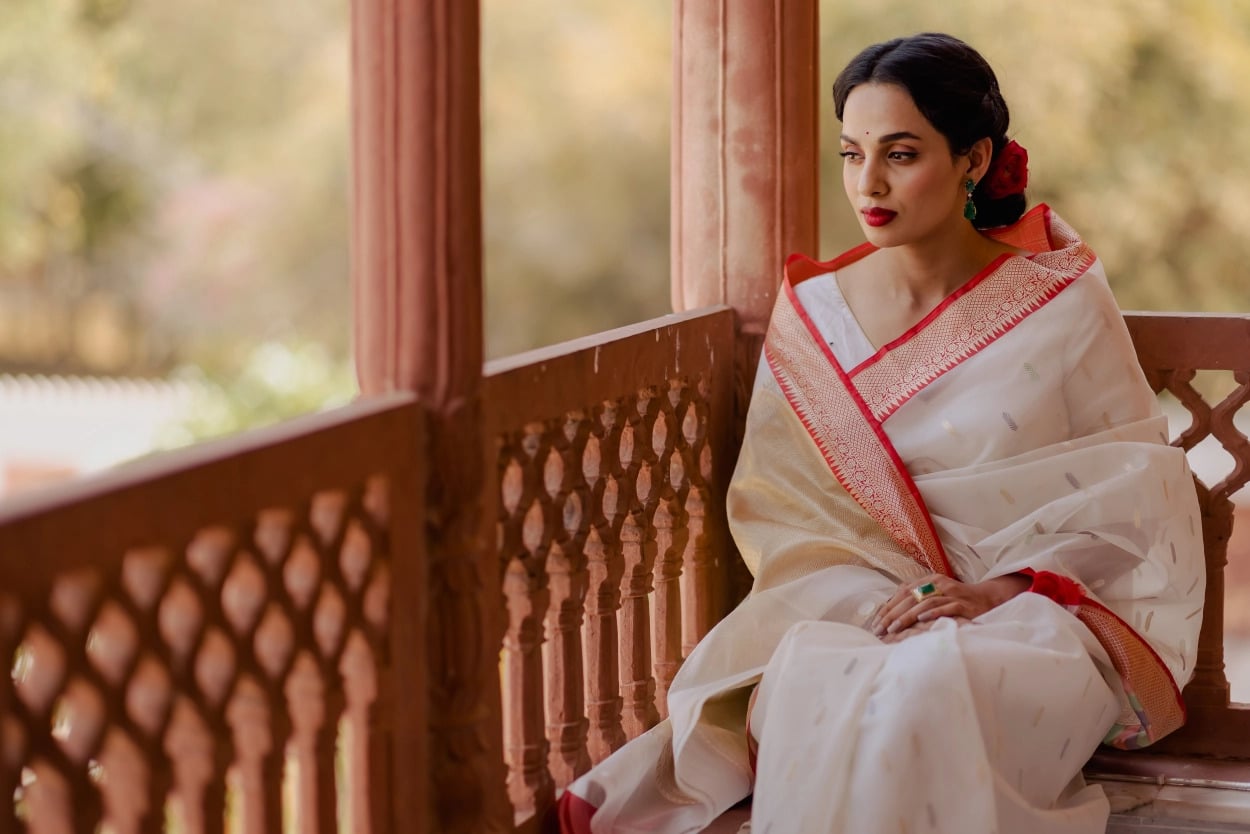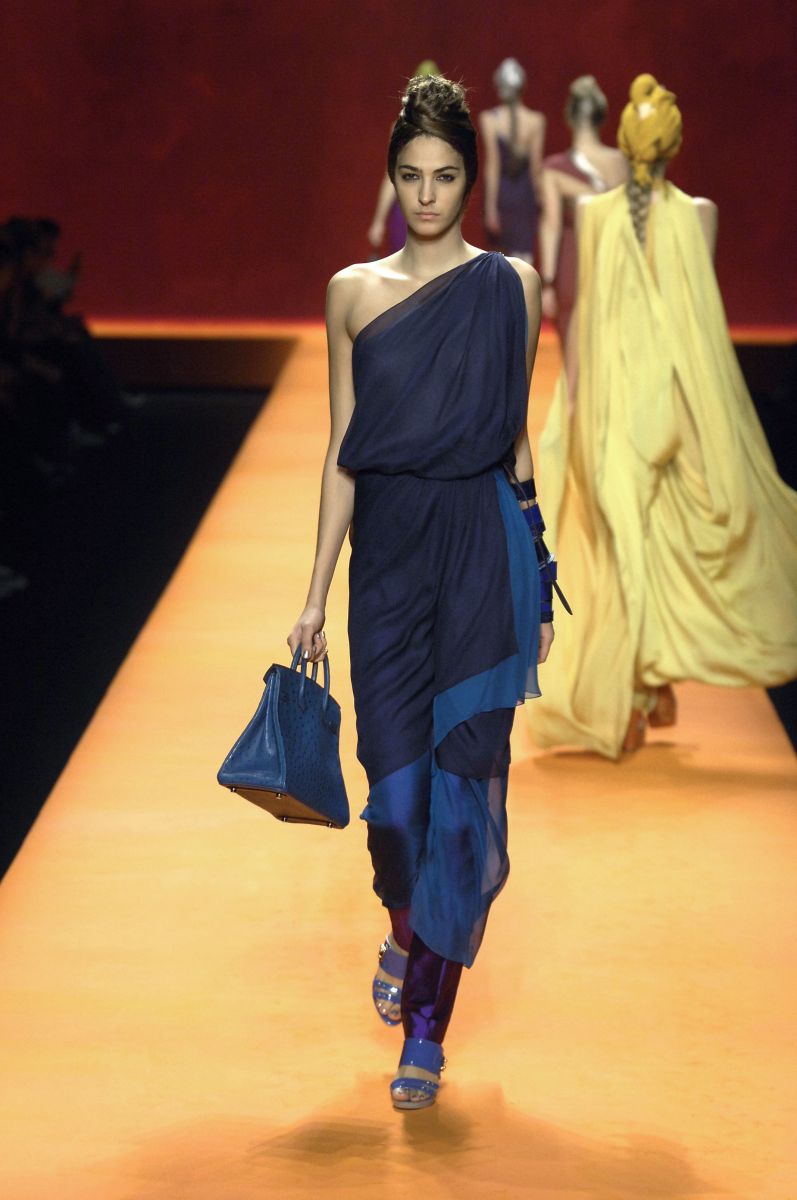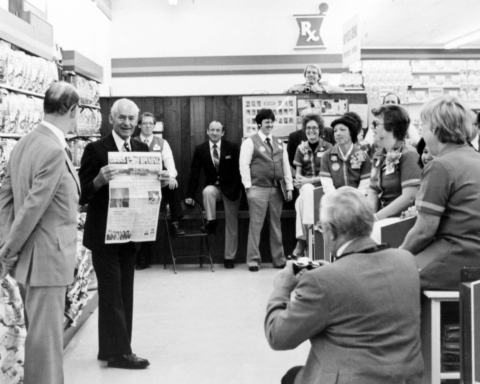The Indian sari is undergoing a veritable revolution as a fashion accessory. Its formerly unorganized market is now growing and structuring, while the major luxury brands are seizing on this trend. A veritable fashion phenomenon, the Indian sari now combines tradition and innovation, with daring designs and surprising combinations.
Over the last ten years, the sari, that long piece of cloth that wraps around the body, has undergone an evolution unprecedented in its five millennia of history. The Offbeat Sari exhibition at London’s Design Museum illustrates the renewed interest in this traditional garment. It brings together over 90 iconic saris from studios and innovative designers across India, including the very first sari worn at the Met Gala and an aluminum jersey sari worn by Lady Gaga.
It was in 2015, when she met designers in Delhi who were transforming the sari, that Priya Khanchandani, curator of the exhibition, became aware of this movement.
“I saw the sari reborn as an everyday garment, but in a very fashionable way. Younger women were starting to wear it”, she recounts. “Often intellectuals, writers and artists, who were wearing it in a way I hadn’t expected.”
Previously reserved for special events and weddings, the sari has reinvented itself as a garment suitable for everyday life, even when paired with T-shirts and sneakers. The rise of mass consumption and social networking in India, combined with the growth of the urban middle class, have helped accelerate this movement, as the curator points out.
“The influence of social networks is having a very big impact in India, particularly among young people, allowing trends to spread and, I believe, the wearing of the sari is becoming a popular movement”, she explains.
A little-organized market
The sari has enjoyed a renaissance in recent years, becoming a veritable fashion phenomenon. Women now proudly display their collection of drapes from all over the country on social networking groups such as SixYardsAnd365Days and Saree Speak. Celebrities, too, affirm their attachment to India by wearing hand-woven saris. Recently, producer Guneet Monga took to the stage in a dazzling dark-pink Benarasi sari to receive the Oscar for the documentary “Elephant Whisperers”.
The sari market represents sales of 80,000 billion euros, but it remains poorly organized and most heritage brands remain regional. However, the resurgence of the sari as a fashion statement has led to the emergence of new brands and efforts to structure this market. Titan Company leads the way with its Taneira brand, valued at 100 billion euros. It now faces brands such as Karagiri, Suta, Raw Mango, Ekaya Benares and Tilfi. The latter not only source saris from weavers across the country to position themselves as national brands, but also invest in fabric design and texture, while building a strong supply chain.
According to Aditi Chand, co-founder and CEO of Tilfi, the sari brand market is currently in a similar situation to that of Titan’s jewelry brand Tanishq in its early years. “Tanishq created brand awareness and trust. The same model is developing in the sari market. This is becoming a complex market.”
Fashion accessory
This booming market is attracting major luxury brands. In 2011, Hermès International launched its second range of limited-edition Indian saris. At the time, Bertrand Michaud, President of Hermès India, stated that the aim was “to get closer to Indian culture and the tradition of elegance of Indian women”.
The launch of these saris, created in Paris and made in a variety of fabrics, from cashmere to twill silk, was part of the company’s drive to win new buyers for luxury products in different markets. By this time, Hermès had strengthened its presence in India by opening a flagship store in Mumbai. It already had two outlets in New Delhi and Pune, in the west of the country.
Similarly, Louis Vuitton was one of the first luxury brands to enter this market, in 2005. The brand now has numerous stores in India, followed by Chanel and Versace.
More recently, Dior chose Mumbai’s iconic Gateway to India as the backdrop for its Fall 2023 collection. Models paraded in front of floral backdrops, accompanied by the music of tabla virtuoso Anuradha Pal. Silhouettes in bright colors such as rani pink, acid yellow and Madras checks were inspired by Indian tunics and saris.
To complement this event, the luxury brand has also produced an exclusive documentary revealing all the stages of this creation, from the sources of inspiration to the fashion show, via fascinating exchanges with the artisans. Through this line, the Artistic Director wished to highlight the unfailing collaboration and friendship she has developed over the years with Karishma Swali, who runs the Chanakya workshops and the Chanakya School of Craft.
Read also >DIOR FASHION SHOW IN INDIA: KNOW-HOW, TRADITIONS AND A PINCH OF POETRY
Featured photo : ©Shutterstock



















